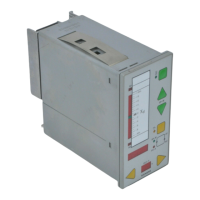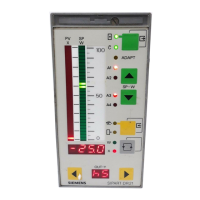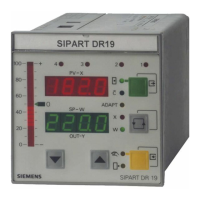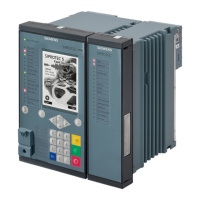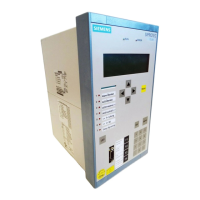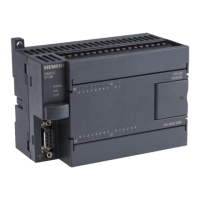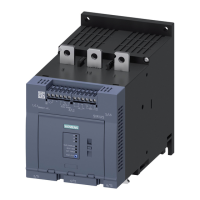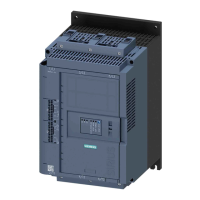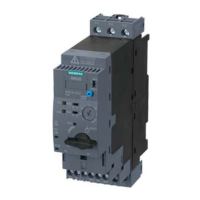Manual
1 Technical Description
1.5 Functional Description
1.5.9 Restart Conditions
SIP ART DR24 6DR2410
C79000-G7476-C153-03
91
1.5.9 Restart Conditions
If the power supply fails, the analog and digital outputs become powerless, i.e. AA1 to
AA3 : 0/4 mA. If AA4 is operated by the y--hold module, the output value depends on the power
supply of the module (see chapter 1.4.2, page 12, 6DR2802-8A)
BA1 to BA16 : V oltage output: Lo
BA9, 10 and 13, 14: Relay contact, changeover contact: rest position
Every power on triggers a further reset for the CPU.
The reset triggers a reset under the following conditions:
The restart conditions for counting, timing and memory functions are specified in the individual
function blocks. The conditions depend on the configuring in mode hdEF (bAtt = YES, no). At
batt = YES the last value before the power failure is usually used for starting, at batt = no the
outputs of the function blocks are set specifically.
The non--storing functions react according to the available input data when restarting.
If special demands are made on the restart conditions, the conditions can be changed by con-
necting switch over functions with constants or parameters depending on the signals rES1,
rES2.
1.5.10 Arithmetic
The analog variables are processed in a 3--byte floating point arithmetic. Two bytes are used for
displaying the mantissa, 1 byte is reserved for the sign of mantissa and exponential and the
exponential itself. This gives a decimal number range of --10
19
to +10
19
with a resolution of
1LSB=1.6⋅ 10
-5
(16 bit resolution, LSB = least significant bit). The computing error per
operation is a maximum 1 LSB on average.
The resolution is increased to 32 bits for some time--dependent functions (e.g. PID controller,
integrators, clock) so that slow integration processes can also be shown as addition per com-
puting cycle.
Δ
Δt
= 2.4 · 10
−10
·
1
t
Δ
= value change at the output o
a
unction block
t
c
=cycletime
Process variables can be input and output through the analog inputs and outputs in the rated
signal range from 0 % to +100 % (0/4 to 20 mA). The dynamic range ranges from --5 % to
+105 %.
Process variable values of 0 to 100 % correspond to a number range of 0 to 1 in floating point
arithmetic.
Computing operations are also performed with this number value. In additions and subtractions
you can calculate in percent and in the area of floating point arithmetic:
100 % -- 30 % + 20 % = 1 -- 0.3 + 0.2 = 0.9 = 90 %
